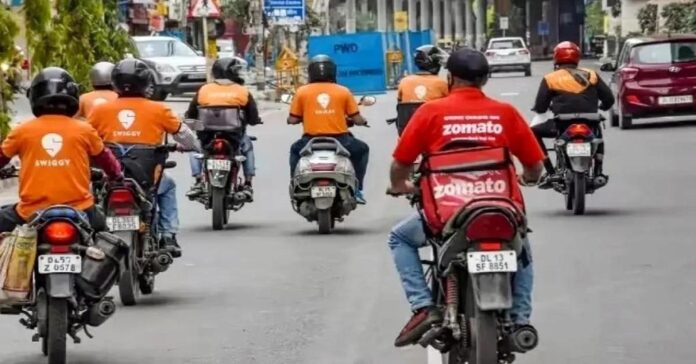The central government’s new labor force policy proposes several new provisions for workers. Under this policy, formal or temporary workers (gig workers) working for online platforms like Swiggy, Zomato, Ola, Uber, and Amazon will now be recognized.
This means they will also be able to benefit from social security, insurance, and pension schemes. The central government’s new labor force policy proposes several new provisions for workers. Under this policy, formal or temporary workers (gig workers) working for online platforms like Swiggy, Zomato, Ola, Uber, and Amazon will now be recognized. This means they will also be able to benefit from social security, insurance, and pension schemes.
This system will reveal how many people are working in which sector, who has received insurance or pension benefits, and where safety regulations have been violated. Complaints will also be filed online and resolved in a timely manner. The policy is proposed to be implemented in three phases, focusing on achieving the policy’s goals.
The focus will be on providing opportunities
The new labor policy will act as an employment facilitator, connecting workers, employers, and training institutions. The National Career Service will be developed as India’s digital public infrastructure for employment, providing job matching, skill verification, and skill-matched employment opportunities to youth. According to the draft, this policy will help make India a developed nation by 2047.
India has a workforce of over 50 crore.
The draft states that India’s workforce comprises over 500 million workers, including formal, informal, gig and self-employed workers. This workforce is India’s largest productive asset.
Such a large population and diversity gives India a strategic advantage but there are also complex challenges like equitable development, quality employment and social security, keeping in mind which work needs to be done in an integrated manner for social security.
Key policy objectives
- To provide social security to workers, a unified social security account will be created by linking EPFO, ESIC, PMJAY, e-SHRAM and state welfare boards.
- The Workplace Safety and Health Code 2020 will be implemented, which will include risk-based inspections and women-sensitive standards.
- An integrated career framework will be created by linking Skill India, NAPS and PMKVY programmes.
- The target is to increase women’s labor force participation to 35 percent by 2030. Emphasis will be placed on providing new opportunities for entrepreneurship and career guidance for youth.
- Single window digital compliance and self-certification system will be implemented for MSMEs.
- Green jobs, AI-enabled security systems and promotion of eco-friendly industries.
- Transparency and inter-ministerial coordination will be ensured through the Integrated National Labour Data Architecture.
The policy will be implemented in three phases
Phase 1: 2025–27 Registration of all workers and creation of a social security platform.
Phase 2: 2027–30 Integrating Skill India and National Career Service, strengthening digital systems.


